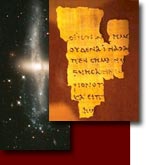| Site Map | Contacts | Links | Newsletter | |
Old Testament:
Rabbinic Literature
According to Jewish tradition, Ezra founded the "Great Assembly" of teachers who would preserve the oral traditions. Towards the middle of the third century BC the Great Assembly ceased and another organization the "Sanhedrin" took charge of the affairs of the community. Hillel started the school of Tannaim (meaning Teachers) with a lenient view of the law. His contemporary Shammai also started a school, but was stricter in his views of the law. Judah the son of the great Simeon Gamaliel (Acts 5:34, and teacher of Paul, Acts 22:3), complied the Mishnah about 200 AD which is like the official textbook of the torah. Mishnah is from the root meaning "to repeat" the oral teaching. The Mishnah is arranged in six sections called Sedarim (Orders), each Order has a number of Massichtoth (Tractates). The Tosifta (Supplement) is another work that has additional teaching that was not as authoritative as the Mishnah. Commentary about the Mishnah accumulated which was called Gemara (completion) because it completes the Mishnah. The Mishnah together with the Gemara is called the Talmud. Two Talmuds were complied; the Palestinian Talmud written in Western Aramaic (similar in Biblical Aramaic), and the Babylonian Talmud written in Eastern Aramaic. Miscellaneous material of the Talmud is divided into subject matter into two categories known as Halachah and Haggadah. The Halachah is the section of the Mishnah and Gemara that deals with the law and how to keep it. The Haggadah deals with all non-legal sections, the moral lessons and opinions of the teachers. The Talmud was completed about 600 AD.
The oldest and first complete Jewish commentary on Genesis is Genesis Rabbah. It was complied about 400 AD, but includes teachings much earlier. Verses outside Genesis are brought in to further explain Genesis. There are comments, questions, and arguments from the great Rabbis about the meaning of each verse in Genesis one.
